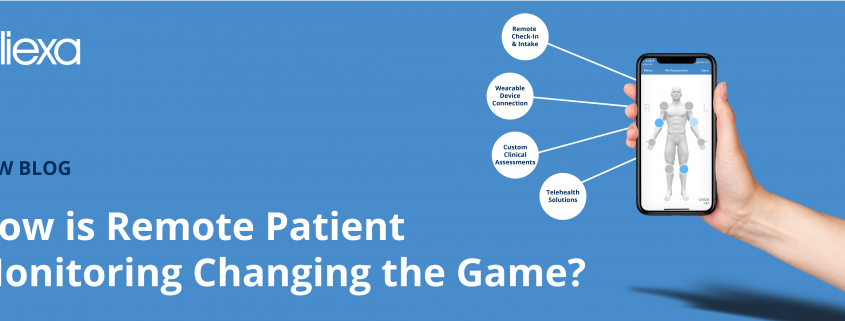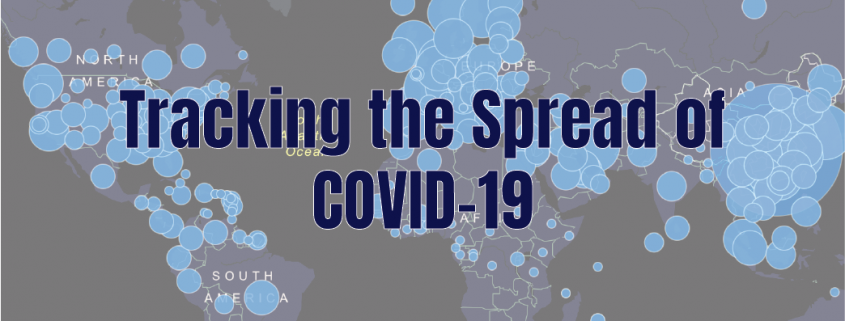Remote patient monitoring is a game changer during the COVID-19 outbreak.
Many questions have been brought up regarding the status of our current healthcare system. How can I get in touch with my physician? How are healthcare clinics handling social distancing and quarantine? Are they still able to meet with me? Do I have any symptoms of Coronavirus? How do I know whether I need to go to a hospital for testing?
Over the last few weeks, our healthcare environment has turned upside down by the emergence of Coronavirus in the United States. Serving patients during this time presents new challenges and has established a “new normal” for clinical workflows.
What exactly is Remote Patient Monitoring (RPM)?
Imagine you are experiencing some symptoms that you’d like your clinician to know about. Maybe you have some preexisting healthcare conditions that make you concerned. Remote patient monitoring allows your clinician to monitor your symptoms and reach out with any changes you should make to your current treatment plan. Most RPM platforms are online or through a mobile application that allow for secure communication with your healthcare provider from the comfort of your home.
cliexa utilizes Remote Patient Monitoring to improve patient care. The platform provides clinically validated assessments with automated disease activity scores, allowing clinicians to tap into wearable devices for real-time data. These wearables provide actionable data that otherwise could go undetected through general patient reported outcomes. This way of closely monitoring patients can lead to an improved patient satisfaction with overall care.
How can Remote Patient Monitoring help during the COVID-19 outbreak?
Remote patient monitoring with cliexa is changing the game in healthcare. Recently, many digital health companies have been working towards telehealth solutions for clinics. With cliexa’s remote patient monitoring, patients do not need to be physically present to onboard. Instead, they can receive care and information from a clinician with a fully remote platform. cliexa addresses the needs of each clinic’s specific Coronavirus response. cliexa enables remote check-in, customized clinical intake, secure transfer of medical history records, and remote patient monitoring. All of these functionalities in the platform seamlessly integrate into the existing EMR system. These functions allow patients to conduct all necessary actions from home on their mobile phones prior to telehealth or in-person visits.
Providers can leverage these services, along with cliexa’s COVID-19 screening, to triage patients with chronic conditions based on their risk level. The cliexa COVID-19 screening capabilities follow the CDC’s guidelines to assess risk factors for patients, including preexisting medical conditions. cliexa allows clinicians to utilize virtual health functionalities including remote monitoring and telemedicine visits.
How does Remote Patient Monitoring differ from Telehealth?
Telehealth allows for physicians to meet with their patients virtually – through video or audio communications. However, telehealth requires that patients have previously gone through an onboarding process with their specific clinic or physician. Many telehealth services still require patients to visit their healthcare provider’s office in-person for onboarding. During this initial office visit, the patient fills out onboarding documentation including waivers and past medical history documents. After all patient information is entered into the clinic’s EMR, only then can the patient enroll in telehealth functionalities.
This is where cliexa’s remote patient monitoring platform differs. Our platform eliminates this step completely. Clinics fully digitize the onboarding process and customize it to their specific clinic needs with cliexa. With remote check-in and customized clinical intake features, patients can enroll with a clinic of their choice and start using telehealth services safely from home. This eliminates the need for an initial in-person visit with a healthcare provider, reducing COVID-19 exposure in hospitals and clinics.
How can I learn more?
During this chaotic time, it’s important to stay informed with what’s happening in our current healthcare system. Using remote patient monitoring in healthcare today is outlined in online articles released almost daily. Participate in webinars to learn more about what digital healthcare companies are doing to help – and review materials like this on your own.
cliexa is determined to do all we can to help healthcare providers overcome challenges and promote better care for patients. To support our healthcare partners through this pandemic, we are waiving all implementation fees until further notice. COVID-19 has distanced us, but with the right tools the show can and must go on.
For more information, check out our brief explainer video or schedule a demo of the cliexa platform with our team here.



